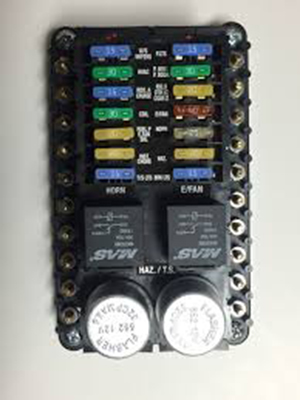Engineered Wire Harness Designs for Automotive Wheel Speed Sensor Electricals
News 2025-10-31
Wire harnesses are critical components in automotive systems, particularly for wheel speed sensors that monitor vehicle wheel rotation to enhance safety features. These engineered designs integrate wires, connectors, and protective elements to ensure reliable signal transmission in harsh environments. By focusing on precision engineering, manufacturers address challenges like vibration, temperature extremes, and moisture, which can affect sensor accuracy. This approach not only supports core functionalities such as braking and stability control but also contributes to the overall efficiency and longevity of automotive electrical systems. Advanced wire harness designs play a pivotal role in modern vehicles by reducing failure rates and improving data integrity for real-time applications.

Application Scenarios
In automotive engineering, wire harnesses for wheel speed sensors find extensive use in safety-critical systems. For instance, in anti-lock braking systems (ABS), they transmit speed data to prevent wheel lockup during braking, enhancing vehicle control on slippery surfaces. Similarly, in electronic stability control (ESC), these harnesses enable precise monitoring to detect and correct skids, reducing accident risks. Beyond traditional applications, they support advanced driver-assistance systems (ADAS) like adaptive cruise control and collision avoidance, where accurate speed sensing is vital for autonomous features. This versatility makes engineered wire harnesses essential in both passenger cars and commercial vehicles, adapting to diverse operational conditions from urban driving to off-road terrains.
Performance Advantages
Engineered wire harness designs offer significant benefits that elevate the performance of automotive wheel speed sensors. One key advantage is superior durability, achieved through the use of high-grade materials that withstand corrosion and mechanical stress, ensuring consistent operation over the vehicle’s lifespan. Additionally, these designs minimize electromagnetic interference (EMI) with shielding techniques, maintaining clear signal transmission even in electrically noisy environments like engine compartments. Enhanced flexibility and custom routing options allow for optimal integration into various vehicle architectures, reducing weight and space requirements. Overall, such innovations lead to improved sensor accuracy, faster response times, and better fuel efficiency by supporting efficient energy use in safety systems.
Frequently Asked Questions
1. What is a wire harness in the context of wheel speed sensors?
A wire harness is an organized assembly of wires and connectors that bundles electrical components, providing a structured path for signals from wheel speed sensors to the vehicle’s control units, ensuring reliable data flow.
2. How do engineered designs improve sensor performance?
Engineered designs enhance performance by incorporating features like robust insulation and EMI shielding, which reduce errors and extend the sensor’s operational life in demanding automotive conditions.
3. What materials are commonly used in these wire harnesses?
Common materials include copper for conductors due to its conductivity, thermoplastic elastomers for insulation to offer flexibility and resistance to heat, and protective sheathing like nylon or PVC to guard against environmental factors.


